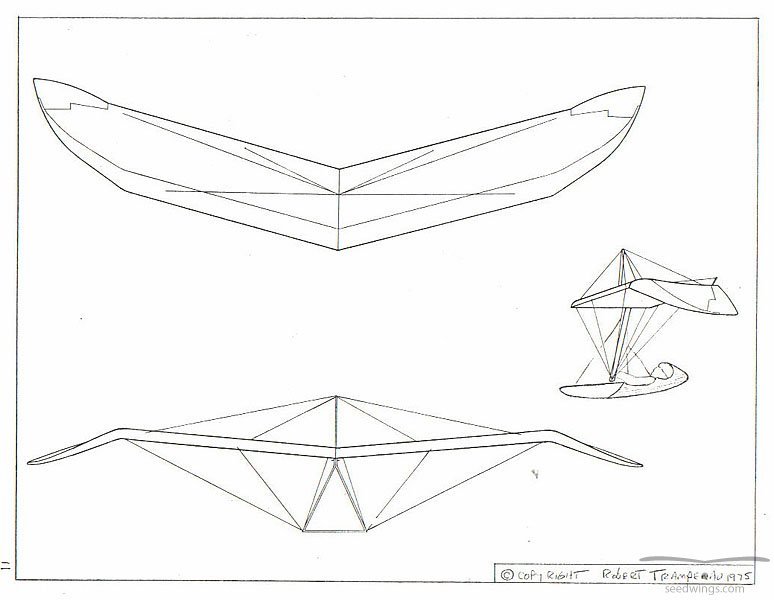In another thread authored by Joe F he included a video interview with early hang gliding pioneer Eddie Paul. Considering Eddie's perspective on the dangers of (early) hang gliding, I put together the below response. It touches upon the things that make hang gliders unique flying craft.
Along those lines I think this subject deserves its own thread. So, here it is. I'd love to have some views expressed beyond my own on this topic. Positive criticism of my thoughts is even welcome!
Original post -
I notice how Eddie Paul holds a perspective on hang gliders similar to how many of us now see collapsible canopies. Some of his comments, as they relate to (even modern) Rogallo wings are still true . . . But with the advent of defined tips, airfoil shaped battens and more highly defined (aerodynamically speaking) double surface wings, many of the issues which he speaks of in the video are, or are close, to non-issues at this point in time.
I would have to mostly admit that when a hang glider is "weightless" (falling not flying) weight shift can not control the wing.
However, I've had my glider intentionally inverted, on one occasion, (looping it baby!) when things got very quiet at the top. Yet, I could use my body mass as an "anchor spot" and thrust the base tube forward. This caused the lighter mass of the glider to change position (with its attitude now nose down compared to the horizon). Both the glider and myself had forward momentum, yet not flying speed. Considering this, I think that Eddie Paul's comments are overly simplified and based on "old" technology. I wonder if he's seen a late model high performance topless comp wing?
What will always be true about hang gliders is that they fly at similar air speeds to those very commonly present in the lower atmosphere. While flying at 20 - 30 mph, it's not impossible at all for the dynamic air around us to, due to various types of turbulence, equal our speed from behind - causing our wing to have an unpredictable air speed of zero. At that point, your wing is not flying. If that condition is only momentary, great. If it lasts very long you will go from momentarily "floating" to falling - until aerodynamic flying speed is regained. Hopefully that happens before you hit the ground!
This can also occur with faster small aircraft, and even commercial jets - byway of those nasty Gust Front events. So everything that flies can stop flying - due to pilot error OR nasty old Mother Nature.
Finally, consider a small to medium sized boat unexpectedly surrounded by large waves. The captain of such a boat can find him/herself and the boat in BIG trouble. But a surfer, on a MUCH smaller surf board, with just as big - or BIGGER - of a wave, can have lots of fun!
A similar context pertains to hang gliding. A small to medium size aircraft can find air turbulence uncomfortable (at least). However, a hang glider pilot can find mild to medium or even strong turbulence (i.e., thermals) VERY enjoyable!
 Home
Home

